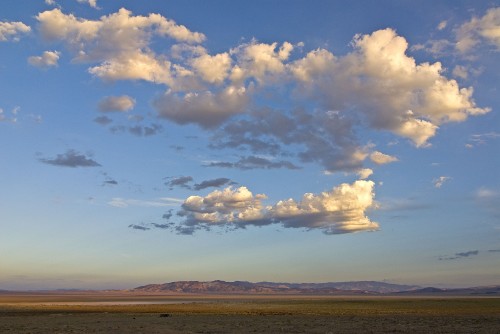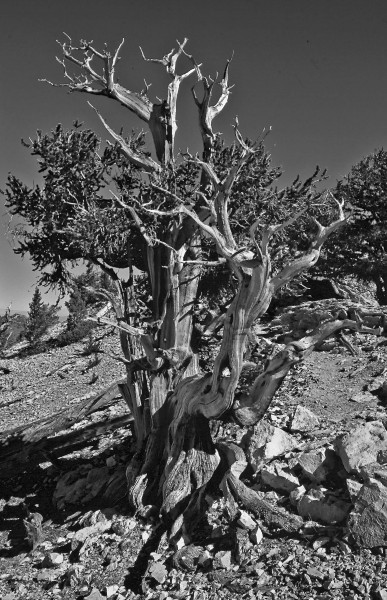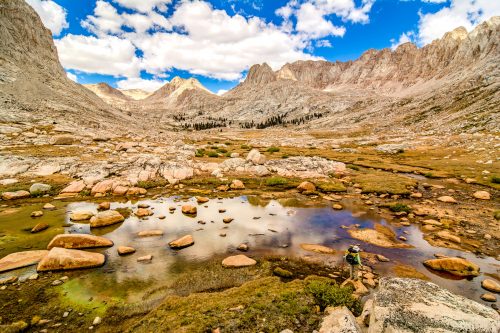
When I stood here at the entrance to Miter Basin, I was truly amazed. It was so vast and grand, and it had appeared so suddenly. The urge to enter and explore was irresistible; not only the basin floor but the succession of lakes I knew were nestled above. When my wife, Renée, saw this photo, or when she sees any landscape like it, she dismisses it as barren. It holds no allure for her.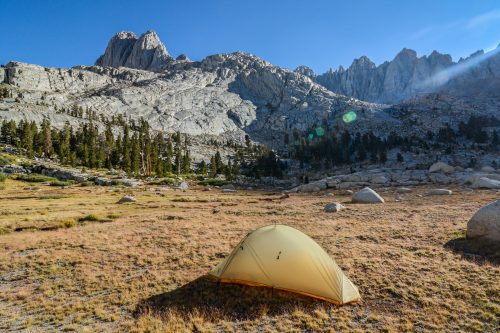
I am interested in the responses people have to different landscapes. I won’t pretend to be a psychologist and guess what they might mean, but I wouldn’t be surprised if they might reveal a good deal about our basic nature. Renée loves a seaside setting or the golden oak-studded California hills. I do too, but they don’t trigger the same spinal tingle that I feel at the likes of Miter Basin.
I came to Miter Basin with four friends, and I was interested to note that the others set up camp in or near the grove of foxtail pines at the base of the slope you see in the picture. I preferred to plunk down near the middle of the basin so that I could feel the immensity of the landscape and see as much of the night sky as possible (the tent was only in case of rain). Mmmm, I wonder.
 Wherever we chose to roll out our bags, each of us was enchanted with Miter Basin. The rim of the basin is surrounded by 13,000′ peaks, and each recess above holds a mountain lake with its own unique charm. Beautiful fall reds colored a ground-hugging mosaic of alpine flora. Daybreak songs of a coyote choir echoed up and down the granite walls, adding to the mystery and magic.
Wherever we chose to roll out our bags, each of us was enchanted with Miter Basin. The rim of the basin is surrounded by 13,000′ peaks, and each recess above holds a mountain lake with its own unique charm. Beautiful fall reds colored a ground-hugging mosaic of alpine flora. Daybreak songs of a coyote choir echoed up and down the granite walls, adding to the mystery and magic.
Leave the psychologists out of it, I guess. Let each of us prefer the part of nature we do without explanation. “Why” isn’t important. The gift of just standing there is enough.
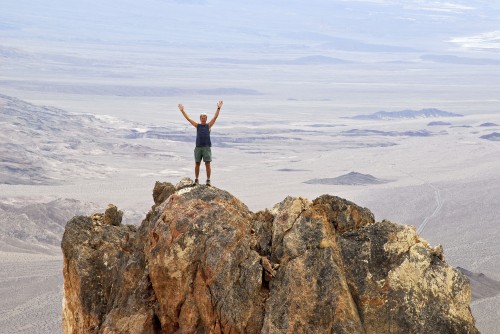 I recently wrote a post about adventure; the notion that the urge for it is a greater motivator than we recognize. I suggested that 49ers came to California as much for the adventure as for the prospect of striking it rich. As evidence, I offered the testimony of many who went to a later gold rush: the Klondike in 1898-9. As with the California Gold Rush, virtually everyone returned empty-handed, but most who were interviewed by author Pierre Berton looked back on that time with fondness and satisfaction.
I recently wrote a post about adventure; the notion that the urge for it is a greater motivator than we recognize. I suggested that 49ers came to California as much for the adventure as for the prospect of striking it rich. As evidence, I offered the testimony of many who went to a later gold rush: the Klondike in 1898-9. As with the California Gold Rush, virtually everyone returned empty-handed, but most who were interviewed by author Pierre Berton looked back on that time with fondness and satisfaction. We often buttress our case to do something new and exciting with “reasons,” but more and more, I think the real reason we want to do it is because it is new and exciting; aka an adventure.
We often buttress our case to do something new and exciting with “reasons,” but more and more, I think the real reason we want to do it is because it is new and exciting; aka an adventure.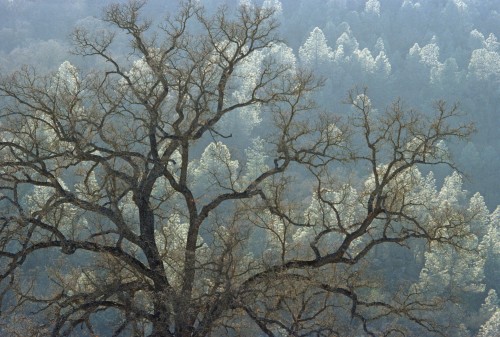 I’m not supposed to say that. It’s not PC. “Digger” is a condescending term that was used by early Eurpoean settlers to characterize some of the Native Americans in the Great Basin and in California who dug in the soil for roots and bulbs. One of our native pines inhereted that moniker as its common name, but the modern day arbiters of politeness say no, it must be changed. So, the digger pine has become the gray pine, or the ghost pine, or the foothill pine. I like digger pine. It is a good reminder of just how mean and insensitive we can be.
I’m not supposed to say that. It’s not PC. “Digger” is a condescending term that was used by early Eurpoean settlers to characterize some of the Native Americans in the Great Basin and in California who dug in the soil for roots and bulbs. One of our native pines inhereted that moniker as its common name, but the modern day arbiters of politeness say no, it must be changed. So, the digger pine has become the gray pine, or the ghost pine, or the foothill pine. I like digger pine. It is a good reminder of just how mean and insensitive we can be. I am never quite sure what the exact recipe is for a great spring wildflower display. While I enjoy botanizing in California’s Coast Range and in the Sierra, I know just enough to be dangerous. I’m likely to concoct some groundless theory and assert it as fact. But based on the significant rainfall we have had thus far, I wonder if this spring could be a memorable one.
I am never quite sure what the exact recipe is for a great spring wildflower display. While I enjoy botanizing in California’s Coast Range and in the Sierra, I know just enough to be dangerous. I’m likely to concoct some groundless theory and assert it as fact. But based on the significant rainfall we have had thus far, I wonder if this spring could be a memorable one. Naturally, rain is a must, but there have been many so-so spring blooms after a wet winter; other factors certainly play a part. It makes sense that during the recent drought years viable wildflower seeds have not received enough water to sprout. Perhaps through the sparse blooms of recent springs that seeds have been accumulating waiting for a winter like we are having now. With an average amount of rainfall during the rest of the California winter, maybe we will see a spring bloom like 1997.
Naturally, rain is a must, but there have been many so-so spring blooms after a wet winter; other factors certainly play a part. It makes sense that during the recent drought years viable wildflower seeds have not received enough water to sprout. Perhaps through the sparse blooms of recent springs that seeds have been accumulating waiting for a winter like we are having now. With an average amount of rainfall during the rest of the California winter, maybe we will see a spring bloom like 1997. Do you buy it? I may be way off base, but it sounds good.
Do you buy it? I may be way off base, but it sounds good.